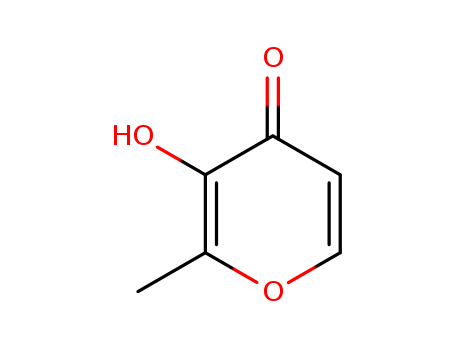

Contact Us: +86-15508631887(WhatsApp/WeChat)
Email:sales@finerchem.com
|
Preparation |
Maltol may be produced synthetically starting from kojic acid . Alternatively, it can be isolated from beechwood tar or from extracts of needles from the genus Abies. Commercially available extracts fromAbies balsamea needles, which are also used as flavor and fragrance materials, usually contain 3–8% maltol. It is used in aroma compositions with a caramel note and as a taste intensifier in, for example, fruit flavors (particularly in strawberry flavor compositions). |
|
Production Methods |
Maltol is mainly isolated from naturally occurring sources such as beechwood and other wood tars; pine needles; chicory; and the bark of young larch trees. It may also be synthesized by the alkaline hydrolysis of streptomycin salts or by a number of other synthetic methods. |
|
Synthesis Reference(s) |
The Journal of Organic Chemistry, 45, p. 1109, 1980 DOI: 10.1021/jo01294a037Tetrahedron Letters, 17, p. 1363, 1976 DOI: 10.1016/S0040-4039(00)78065-8 |
|
Toxicity evaluation |
The acute oral LD50 in rats was reported to be 2.33 g/kg (1.57-3.09 g/kg) (Moreno, 1974). The acute oral 7-day LD50s in mice, rats and chicks were reported to be 848, 1440 and 3720 mg/kg, respectively (Gralla, Stebbins, Coleman & Delahunt, 1969). Acute oral LD50 values were found to be 550 mg/kg in mice, 1620 mg/kg in rabbits and 1410 mg/kg in guinea-pigs (Dow Chemical Company, 1967). The acute sc LD50 in mice was found to be 820 mg/kg. Sc injection of 400 mg/kg resulted in decreased spontaneous activity, bradycardia, hypothermia, skeletal-muscle relaxation and diminution of pinna, corneal, and ipsilateral flexor reflexes (Aoyagi, Kimura & Murata, 1974). Because of a lack of sample, 5 g/kg could only be applied to one rabbit in the dermal LD50 study, but this dosage was not lethal in the one rabbit (Moreno, 1974). |
|
Air & Water Reactions |
May be sensitive to prolonged exposure to light and air. Somewhat soluble in water at room temperature. Freely soluble in hot water [Merck]. Slightly soluble in cold water. |
|
Reactivity Profile |
3-Hydroxy-2-methyl-4H-pyran-4-one is weakly acidic. Reacts with bases. May react with reducing agents. Volatile with steam. |
|
Fire Hazard |
Flash point data on 3-Hydroxy-2-methyl-4H-pyran-4-one are not available; however, 3-Hydroxy-2-methyl-4H-pyran-4-one is probably combustible. |
|
Flammability and Explosibility |
Notclassified |
|
Pharmaceutical Applications |
Maltol is used in pharmaceutical formulations and food products as a flavoring agent or flavor enhancer. In foods, it is used at concentrations up to 30 ppm, particularly with fruit flavorings, although it is also used to impart a freshly baked odor and flavor to bread and cakes. When used at concentrations of 5–75 ppm, maltol potentiates the sweetness of a food product, permitting a reduction in sugar content of up to 15% while maintaining the same level of sweetness. Maltol is also used at low levels in perfumery. |
|
Pharmacology |
In mice, spontaneous motor activity was depressed by sc injection oi relatively low doses of maltol (75 mg/kg), hexobarbitone sleeping time was prolonged by sc or oral administration of 300 mg/kg, and convulsions induced by pentylenetetrazole or strychnine were inhibited by sc injection of toxic doses (500 mg/kg), but 1 mM concentrations of maltol had no effect on oxygen uptake by slices of the brain cortex of the rat (Aoyagi et al. 1974). |
|
Safety Profile |
Moderately toxic by ingestion, intraperitoneal, and subcutaneous routes. A skin irritant. Human mutation data reported. When heated to decomposition it emits acrid smoke and irritating fumes. |
|
Safety |
Maltol is generally regarded as an essentially nontoxic and nonirritant material. In animal feeding studies, it has been shown to be well tolerated with no adverse toxic, reproductive, or embryogenic effects observed in rats and dogs fed daily intakes of up to 200mg/kg body-weight of maltol, for 2 years.The WHO has set an acceptable daily intake for maltol at up to 1mg/kg body-weight.A case of allergic contact dermatitis, attributed to the use of maltol in a lip ointment, has been reported. LD50 (chicken, oral): 3.72 g/kg LD50 (guinea pig, oral): 1.41 g/kg LD50 (mouse, oral): 0.85 g/kg LD50 (mouse, SC): 0.82 g/kg LD50 (rabbit, oral): 1.62 g/kg LD50 (rat, oral): 1.41 g/kg |
|
Synthesis |
By alkaline hydrolysis of streptomycin salts; also from piperdine to pyromeconic acid and subsequent methylation at the 2 position. |
|
Metabolism |
Maltol is rapidly and extensively metabolized in the dog and excreted by the conjugation pathway common to phenolic compounds. Rennhard (1971) reported that 57% of an iv dose was recovered in 24 hr, 88% of the total excretion occurring in the first 6 hr and 65-70% of the dose administered being recovered as sulphate and glucuronide conjugates |
|
storage |
Maltol solutions may be stored in glass or plastic containers. The bulk material should be stored in a well-closed container, protected from light, in a cool, dry place. |
|
Purification Methods |
It crystallises from CHCl3, toluene, aqueous 50% EtOH or H2O, and is volatile in steam. It can be readily sublimed in a vacuum. It forms a Cu2+ complex. [Beilstein 17 III/IV 5916, 18/1 V 114.] |
|
Incompatibilities |
Concentrated solutions in metal containers, including some grades of stainless steel, may discolor on storage. |
|
Regulatory Status |
GRAS listed. Included in the FDA Inactive Ingredients Database (oral solutions and syrups). Included in the Canadian List of Acceptable Non-medicinal Ingredients. |
|
Definition |
ChEBI: A natural product found in Cordyceps sinensis. |
|
Aroma threshold values |
Detection: 29 ppb |
|
Taste threshold values |
Taste characteristics at 100 ppm: sweet, caramellic, cotton candy, with jamy fruity and berry notes. |
|
General Description |
White crystalline powder with a fragrant caramel-butterscotch odor. pH (5% aqueous solution) 5.3. |
InChI:InChI=1/C7H8O3/c1-2-6-7(9)5(8)3-4-10-6/h3-4,9H,2H2,1H3
-
-
-
-
-
The invention provides a preparation met...
In this study, the Maillard reaction of ...
The invention provides a maltol and homo...
The invention provides a methyl maltol s...
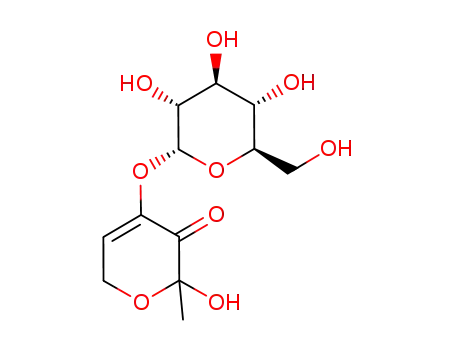
4-(α-D-glocopyranosyloxy)-2-hydroxy-2-methyl-2H-pyran-3(6H)-one

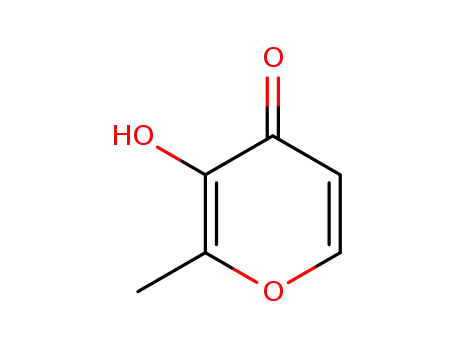
Maltol

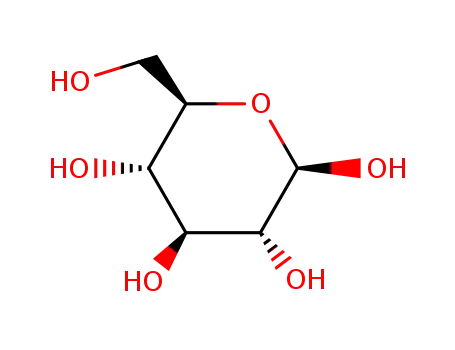
β-D-glucose
| Conditions | Yield |
|---|---|
|
enzymic hydrolysis;
|
cellulose


Maltol

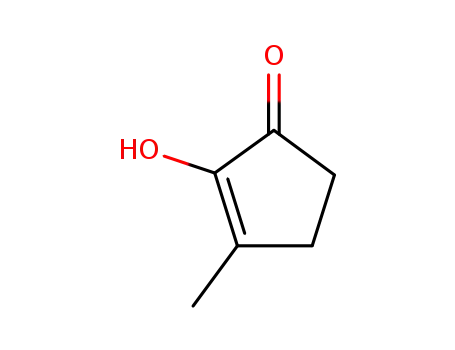
2-hydroxy-3-methylcyclopent-2-en-1-one


levoglucosan
| Conditions | Yield |
|---|---|
|
With air; at 400 - 450 ℃; Formation of xenobiotics;
|
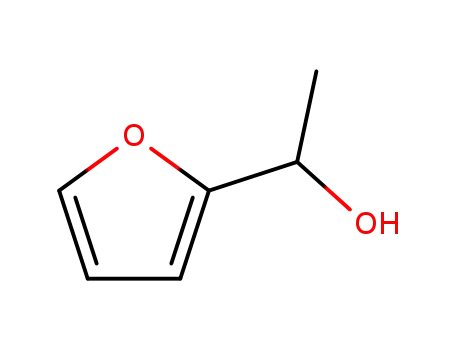
1-(2-furyl)ethanol

4,6-dimethoxy-2-methyl-2H-pyran-3(6H)-one

methyl 6-deoxy-2,3-O-isopropylidene-α-L-lyxo-hexopyranoside-4-ulose

6-methoxy-2-methyl-2H-pyran-3(6H)-one

3-O-benzylmaltol

3-hydroxy-1-(p-methoxyphenyl)-2-methylpyridine-4-one
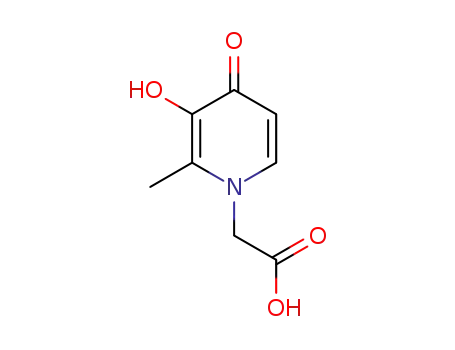
1-carboxymethyl-3-hydroxy-2-methyl-4(1H)-pyridinone

3-methoxy-2-methyl-4-pyrone
